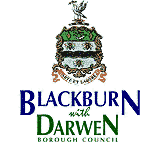






Key Stage 1 Skills For Active CitizenshipYear 1 and 2 Keeping Safe and Healthy
Return to Key Stage 1 Framework
Lesson Plan
Learning Objectives Possible Teaching Activity Learning Outcomes Children should learn:
- what is meant by the phrase 'being safe' and what dangers they face everyday
- how to keep themselves safe in different situations - at home and on the road
- how to keep themselves, their families and their animals safe on firework night
- what is meant by the term healthy and what can affect their health
- At Home
- On the Road
- Children will be able to recognise everyday situations when they are unsafe and facing danger
- Children will be able to help themselves and others to avoid danger on Bonfire Night
- Children will understand some of the different areas that affect their health as well as their safety.
Teachers Notes
Background Notes
Every year thousands of children are harmed or put in danger. Unfortunately, nowadays, nearly everywhere we go and everything we do has an element of danger to it.
It is, therefore, important for children to understand the wide range of safety issues that exist, understand the times that they could face danger and be able to avoid potential areas of danger in order to keep themselves safe.
Examples for discussion
Places that can be dangerous if you are not careful Items that can cause injury if care is not taken On the Road Cars
Bicycles
LorriesIn the Home Poison
Hot Liquids
Matches
CookersIn the Playground Swings
See-saws
SlidesIn the Park Lakes
Rivers
DogsFirework Night Fireworks
Bonfire
MatchesSuggested Teaching Activity
Classroom Drawing Activity and Discussion
Ask the children to draw a picture of a place or item that they think could be dangerous. Discuss the different pictures and look at the different safety issues that are raised by the pictures.
Classroom Activites
The British National Temperance League (www.bntl.org) has developed materials that are suitable for KS1 pupils which contains activities dealing with issues surrounding medicines and alcohol.
Take part in Child Safety Week
Child Safety Week (www.capt.org.uk/csweek/default.htm) is an annual initiative of the Child Accident Prevention Trust aiming to increase the awareness and understanding of children's accidents and their prevention.
Further Resources
The Children's Safety Education Foundation (www.csef.net/) designs and develops child safety resources for teachers. The Foundation works alongside the Emergency Services and child protection specialists in order to provide materials that cover all aspects of safety including First Aid, Fire Safety and Personal Safety.
�
What can be dangerous in my life?
Background Notes
There are lots of different situations that can be unsafe for children but it is worth considering two of these in more detail:
At Home
Nearly half of all childhood accidental injuries occur at home and in the garden. Although accidental injuries are varied there are 4 most common types:
- Falls
- Striking or collision with a person or an object
- Burns and Scalding
- Poisoning
Other injuries in the home include - cutting, piercing, crushing, pinching, suffocation, choking and near drowning.
The five most common locations are:
- Living/Dining room
- Garden
- Kitchen
- Stairs
- Bedroom
NB - This information is taken from an information sheet published by CAPT (Child Accident Prevention Trust). Look at their more detailed information sheet on Home Safety, (www.capt.org.uk/FAQ/default.htm) and select 'Home Accidents' from the list.
On the Road
The majority of all road accidents involve some human error and most accidents could be prevented with care and quite simple common sense actions. Most accidents occur in built up areas and happen in daylight and can involve motor vehicles, motor cycles, pedal cycles and pedestrians.
We are all pedestrians at some time; most of us walk across a road at least once a day and we have no protective shell, such as a car body, to protect us. Those most at risk are 5 to 14 year olds, usually because they are not aware of the dangers that exist or they take risks that adults wouldn't.
NB RoSPA has produced an information sheet which provides ideas you can use for your School Assembly (www.rospa.com/safetyeducation/atschool/assembly.htm).
Suggested Teaching Activity
Home Safety
Factsheets and Project Work
ROSPA provides a range of home safety information (www.rospa.com/safetyeducation/index.htm). It produces a number of fact sheets that contain useful information and suggestions for teaching activities in areas such as:
Water Safety
(www.rospa.com/leisuresafety/water/)Toy Safety
(www.rospa.com/productsafety/factsheets/toysafety.htm)Extension Work
Whilst considering safety in the home, you may wish to lead a discussion into energy in the home, by using the photocopiable worksheets in the Power Pack� Key Stage 1 education resource (see worksheets below).
Worksheets
Power Pack� Key Stage 1 has been developed for pupils aged 4 � 7 by npower with assistance from teachers and pupils. This free teacher resource provides the �bright� ideas to raise children�s awareness of how energy is used in our homes and includes 10 photocopiable activity pages, including electrical safety messages for class discussions. If you would like to order a copy of this Power Pack , e-mail [email protected]
Road Safety
Classroom Activities
The Department for Transport produces a wide range of resources about many different areas of Road Safety. It also produces specific Activity Books and Resources on child road safety
(www.thinkroadsafety.gov.uk/catalogue/ctrs.htm).Factsheets and Project Work
RoSPA provides a range of safety fact sheets which contain useful facts and advice as well as suggestions for projects aimed at schools:
Road Safety (
www.rospa.com/roadsafety/advice/index.htm)In Car Safety
(www.rospa.com/roadsafety/advice/incarsafety/index.htm)Cycle Safety
(www.rospa.com/roadsafety/advice/cycling/index.htm)�
What are the dangers of Firework Night?
Background Notes
The UK Firework Safety Site has produced an overview chart (www.fireworksafety.co.uk/images/fw1.jpg) setting out ideas for how firework safety education can be linked to different areas of the curriculum.
Despite annual safety warnings, Bonfire Night week still ends in disaster for far too many families. However, fireworks and bonfire evenings can provide fun and entertainment for families as long as everyone follows the right safety procedures and remembers that fireworks can be dangerous if misused.
Young people should watch and enjoy fireworks at a safe distance and follow the safety rules for using sparklers. Only adults should deal with firework displays and the lighting of fireworks.
Sparklers
These are often viewed as being harmless but they do burn at fierce temperatures. Sparklers should not be given to anyone under the age of five. To a young child, the heat from a sparkler is the equivalent to the heat from a welding torch.
Pets
Animals do not like bonfires or fireworks as the flames and noise upsets them. They should always be kept safely indoors.
NB - This information is taken from an information sheet on Firework Safety published by ROSPA. (www.rospa.co.uk/)
Suggested Teaching Activity
Class Talk
Cambridgeshire County Council Trading Standards Service has developed a Firework Safety Talk that is suitable for children at Key Stage 1.
Resources that are suitable for use with Firework talks are available to order from the Department for Business, Enterprise and Regulatory Reform (BERR) Firework Safety website (www.berr.gov.uk/fireworks/index.htm)
Advice and Information
The UK Firework Safety website (www.fireworksafety.co.uk/) provides advice and information for all areas of Firework Safety. It also contains a section providing specific Information for Schools (www.fireworksafety.co.uk/school.htm).
Extension Work
Whilst talking about keeping animals safe on firework night, you may also like to extend this into looking at caring for animals in general.
Information and Resources
The RSPCA aims to promote kindness and prevent cruelty to animals. The Society's education service plays a leading role by providing and supporting animal welfare education for students and teachers across the Country. Further information can be found on the RSPCA website
(www.rspca.org.uk/)Information and Resources
The Dogs Trust (www.dogstrust.org.uk/) has developed a Learning Zone which contains games and activities for children as well as information for Teachers
Reading and Writing Skills
Share the World (www.sharetheworld.org.uk/) is a free educational program designed to help your students better understand and appreciate the animal kingdom. Pupils will use their thinking, reading and writing skills to work through the reproducible activities that form the heart of this program.
The Humane Education Teachers' Pack (www.teachkind.org/resources.asp) has been developed by PETA's (People for the Ethical Treatment of Animals) Education and Research Foundation.
This pack has been designed to fit into the KS1&2 Citizenship framework and covers issues relating to the use and misuse of animals in today's society.
�
How can I be healthy as well as safe?
Background Notes
As we have seen there are many areas of dangers facing children and some of these are more obvious than others.
One area that children also need to start thinking and learning about is being healthy. There are lots of different factors that can affect children's health and it is important that they start to understand this.
The whole subject of being healthy is considered in more detail in
Key Stage 2 - Healthy and Safe Lifestyles
Suggested Teaching Activity
Picture Activity
Make a 'healthy day' collage using pictures of foods and activities from magazines, etc. Ask the children to arrange them in order to show a healthy day.
Interactive Stories and Games
Welltown (www.welltown.gov.uk/) has been designed in a joint initiative by the Department of Health and DfES especially for KS1 and it includes interactive stories and games covering health topics based around an imaginary town.
Further Information
Wired for Health (www.wiredforhealth.gov.uk/) includes background information, facts and resources and is the main online information source for the Government's Healthy Schools programme. It also includes information on:
- National Healthy School Standard
- Healthy School, Healthy Teachers
- Safer Routes to Schools
- Cooking for Kids
![]()
Blackburn with Darwen Borough Council, Trading Standards Service, 3-5
Salford, Blackburn, Lancashire BB1 6HG
Telephone:
(Consumer Advice) 08454 040506 (Trader Advice) (01254) 222502
Fax: (01254) 698312
Internet World Wide Web
http://www.tradingstandards.gov.uk
Electronic
Mail:
[email protected]
Copyright � Blackburn with Darwen 2007





